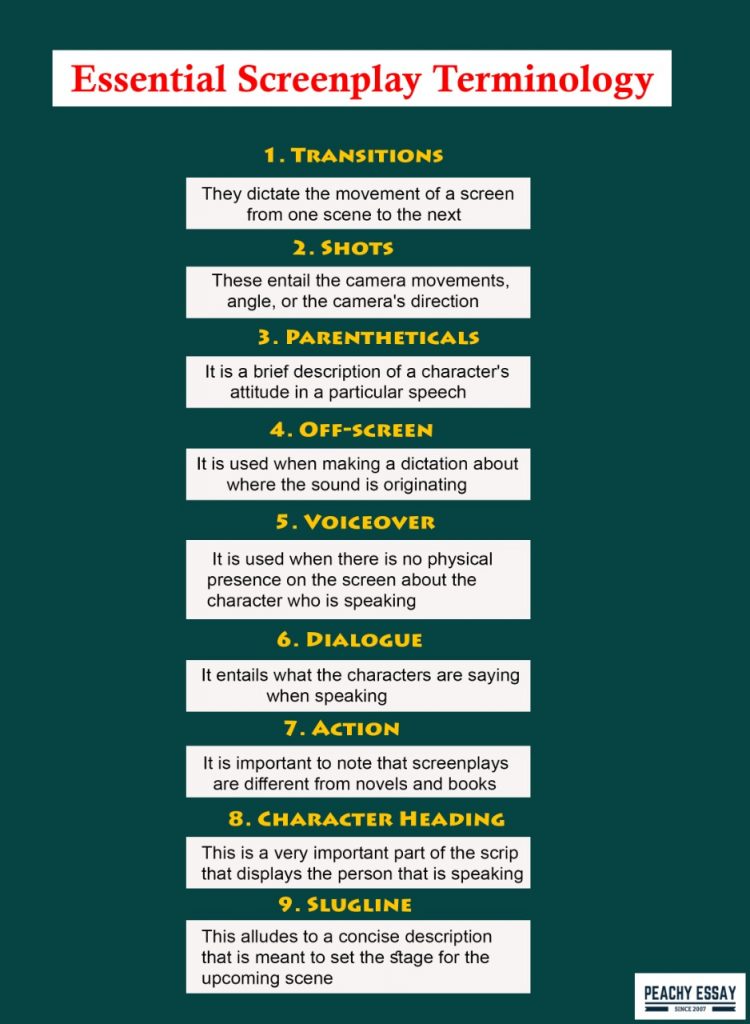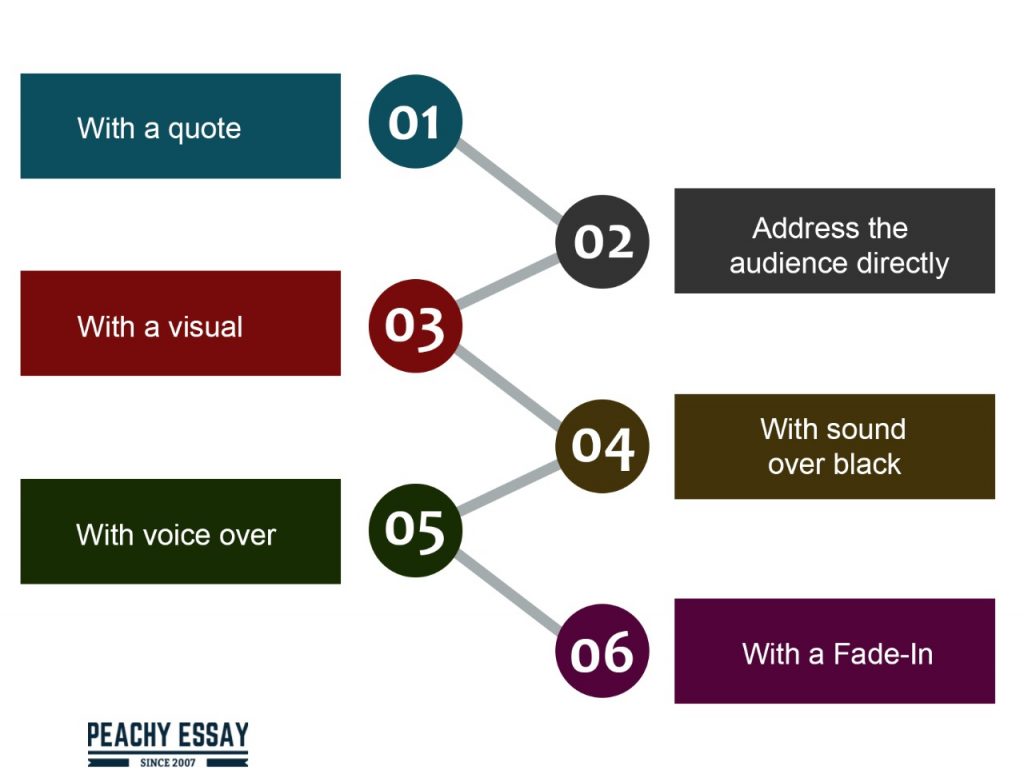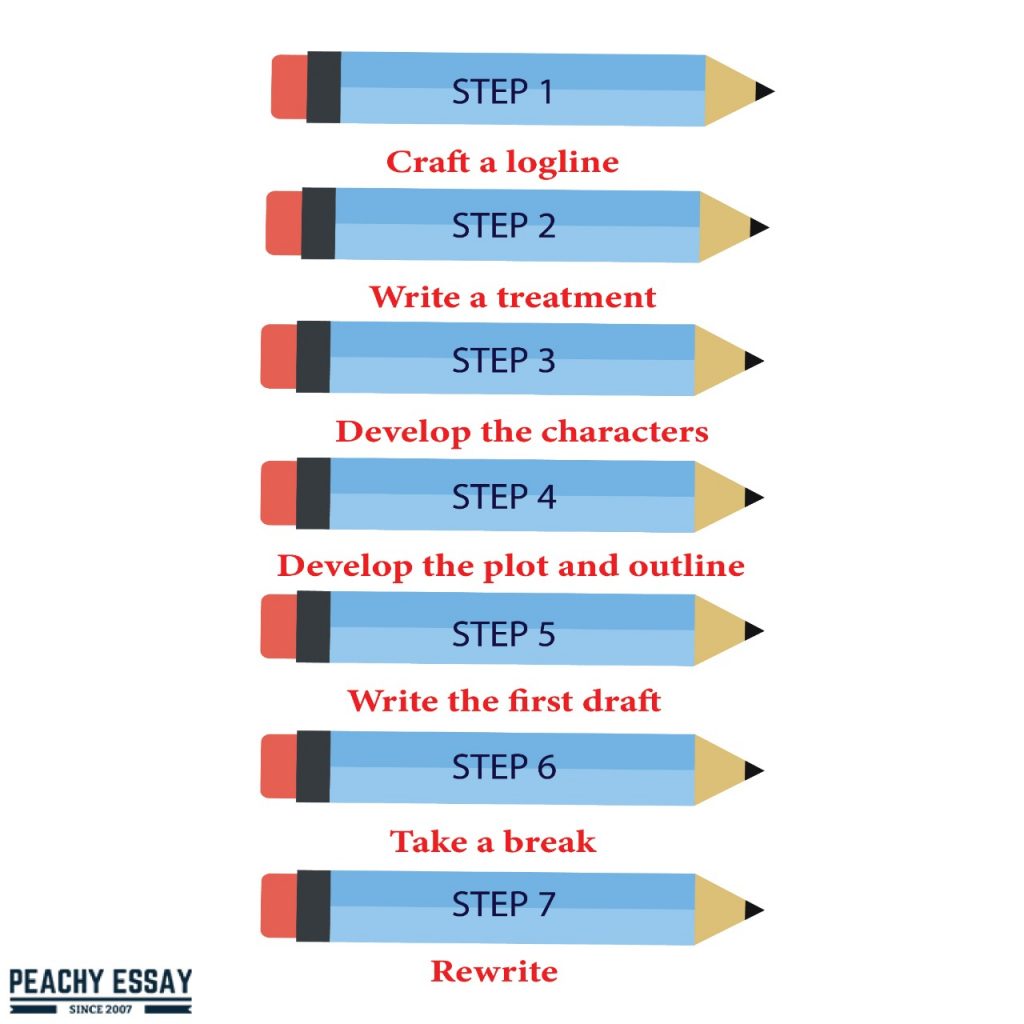A screenplay is an entirely different kind of novel, short story, poem, or essay. Developing a top-notch screenplay requires creativity and extreme clarity in the visual descriptions, which in most cases, may be challenging. Knowing its basics and everything that it entails will aid in simplifying the process. Every film or a movie starts with a screenplay. Making a film without a screenplay can be likened to crossing an ocean without any form of navigation.
What is a Screenplay?
Using the most straightforward words, a screenplay entails a script of anything that is viewed on the screen, and it may be in the form of a video game, television show, web-series, or a film. It is like a story that is told using action, dialogue, and sounds. Although anything that is viewed on the screen always begins with a screenwriter, the blueprint of the entire production is the screenplay. The director uses the screenplay in developing her vision; the actors use it in the molding of their characters, and finally, it is used by the costume designers in dressing the films. People in different departments essentially use the screenplay to perform their jobs, do shooting, production, and post-production.
Why is a Screenplay Important?
As mentioned above, a screenplay acts like a guide for actors, directors, and producers about the exact things that will be presented on the screen. Notably, it serves as a common ground, which every person in the film will use from the beginning to the end of the production process. A screenplay aids in telling the complete story, which contains the dialogue of each character as well as all the actions in the film. It can also provide a visual description of the characters so that the filmmakers can capture the film’s vibe, look, and style. It is also possible to estimate the production cost since the screenplay acts as the television show or movie’s blueprint. Developing a top-notch film requires careful consideration regarding cost estimation.
Ideally, you cannot start the production process of a film without a proper screenplay. It holds the key to the entire process although many of us do not appreciate the details of the document and how it works. Attempting to create a film without this document is like driving to a new area without a proper navigation system. Just like the thesis statements guide you during the essay writing process, the script or screenplay holds all the details of a given production and acts as the roadmap through which concerned parties are involved. In fact, if you read through a films’ script, you will have a clear mental picture of what the final film will be like since everything is included in this important document. The document also helps one estimate the time that the production will take and can therefore be used in the creation of a comprehensive schedule. Films are very expensive and failing to come up with a good schedule can lead to extra costs that essentially make the filming process very expensive.

Transitions – They dictate the movement of a screen from one scene to the next. During transitioning, some commonly used words include; dissolve to, fade-out, fade-in, and cut. Most screenwriters would not want to use too many transition words, especially when they would wish to spare the texts for words that would have more impact on the film.
Shots – these entail the camera movements, angle, or the camera’s direction. This essential part is mostly left for the director.
Parenthetical – It is a brief description of a character’s attitude in a particular speech. For instance, a character may be enraged, distracted, or happy. They also show where a dialogue emanates.
Off-screen – It is used when making a dictation about where the sound is originating. Off-screen means a voice that is not shown on the screen, and hence, it might be originating from a different place.
Voice over – It is used when there is no physical presence on the screen about the character who is speaking.
Dialogue – It entails what the characters are saying when speaking. A dialogue aids in revealing a character’s emotional state, feelings, and personality.
Action – It is important to note that screenplays are different from novels and books because the latter cannot describe internal feelings. Since the audience cannot hear an actor’s thoughts, they must find a way of externalizing those thoughts effectively.
Character Heading
This is a very important part of the script that displays the person that is speaking. This should always be capitalized.
Slug line (Scene Heading)
This alludes to a concise description that is meant to set the stage for the upcoming scene. This part of the script includes the location, time of day, and nature of the next scene (interior or exterior). For example, EXT. PARK.NIGHT
This would show that the action is taking place outside in the park at night. For example, in a horror movie where an individual is being chased by a monster in the park at night.
Reasons Why you Should Format a Screenplay
At times, an individual is excited about writing their story to the extent that they forget the importance of formatting their screenplay. What an individual writes is always just a blueprint of the incidents that will appear on the screen formatting is the process of changing the appearance of a screenplay. Formatting may include action, name characters, dialogue, screen headings, as well as other features such as the font and margin.
Screenplay formatting is an industrial world standard that aids in permitting the writers to communicate the exact things that will be heard or seen on the screen. The concept of screenplay formatting can easily be understood by producers, directors, and other professionals in the field. With a standardized way of communicating, the readers will have an easy way of deciphering the script’s message without getting distracted. Before proceeding any further, it is essential to understand the things that entail a story structure.
A story structure is a way of arranging a story’s elements in a specific chronological order, which will portray the reader’s most useful emotional response. On the same note, a story structure may mean the way reactions, events, characters, and the outcomes of a story are organized to develop a solid plot. When writing a screenplay, the story structure has to be kept into consideration. Always keep in mind that a good format and structure makes the script easier to read and understand by the target audience. If information is not placed well, the general flow of the story will be disrupted. Scenes will not transit well and you will end up with a confusing script incapable of being developed into a proper film.
Importance of Structure in a Screenplay
Ensures the audiences are granted what they want
Without any doubt, the audience will expect some things to happen in specific parts of the movie or film. The structure will reveal various events, seemingly to the extent that the audience will not realize what is coming since they will be hooked into the film. Generally, a well-structured film or movie will make the audience’s emotions go wild and vicariously live through the main characters as well as the protagonists. A poor structure on the other hand will lead to confusion and poorly planned scenes that ruin the quality of the entire film.
Ensures there is proper pacing
When it comes to developing the information of a story, it is essential to keep the audience through the edge of their seats, something that is achieved through proper pacing. When the audience’s pace is kept fast, they will be anxious to want to know about the next events that will take place. Selling a screenplay significantly depends on the writer’s ability to keeping the audience engaged.
The scenes
The element of a structure will help the writer ensure that each of the scenes has a primary objective. A scene without a structure is that which does not provide any real information, lacks a forward motion, has no action, decision, or forward motion. Essentially, the screenplay structure plays an essential role since it ensures that events, characters, and outcomes are arranged systematically to create a solid plot.
How to Start Writing a Screenplay
Deciding on how to start a screenplay is one of the most important things a writer has to do. The beginning is crucial since it creates a hook that makes the audience want to follow the entire story. The following are some of the most effective ways of beginning your screenplay;

What is the difference between script and screenplay?
Although most people use the term screenplay and script interchangeably, there are significant differences between the two. On the same note, whereas some people believe that a screenplay is meant for the filming industry, others think it is meant for the theatre. So you have been watching a television show, and you suddenly realize that the quality of the film has drastically declined to the point that you could write a script. Or is it a screenplay? One of the fundamental differences between the two terms is that whereas a script contains the lines of actors, which are divided into scenes, a screenplay, on the other hand, contains the stage indications, acting, and the full play with lines. The other difference is that whereas a screenplay does not have a time limit, each page of a script is timed into a single minute of shooting.
A screenplay has all the texts of a play, the lighting indications, setting, mood, stage, and how to deliver each line where appropriate. Notably, the screenplay aids the director in developing an opinion regarding their work. The message’s delivery is based on how the screenwriter delivers its message and puts their points across. On the other hand, a script is a type of document presented to the actors. Unlike a screenplay, a script contains each character’s line, which is timed in most cases. In a script, the actors direct all their attention to their lines as well as how to deliver them.
How to End Screenplay Using the Correct Format
There are usually fewer expectations during screenwriting regarding how to conclude the story by wrapping up the loose ends. There are many incidents where movies end, leaving the audience yearning for more. One of the tests of great screenplay formatting is in regards to how the screenwriter has made effective use of their open ending abilities.
Researchers believe that the end of a screenplay is more important than the 90 pages that have been preceded in it. As a result of the degree of its importance, most writers struggle to complete their writings with the right kind of resolutions.
Steps of Writing a Screenplay
Although the entire process of writing a screenplay is rewarding, it is not easy. It requires a lot of dedication and time to develop a top-notch screenplay. If an individual’s objective is to sell their screenplay, the process of completing the first draft is just the starting point. Refining the story will require several drafts, which should be submitted to the producers and studios to plan and make other plans. There are no specific rules for developing a screenplay. As a result, it can take place in whichever order. However, the following steps would highly be recommended;

Step 1 – Craft a logline
A logline is a brief summary of the whole story, which describes the antagonist, protagonist, together with their objectives as well as conflicts. Whereas the antagonist is the opposing force, the protagonist, on the other hand, is the hero of the story. The primary objective of the logline is to convey the emotional undertones and the story’s premise. In the old days, the logline was referred to as the backbone of the screenplay. It assisted the produces to have a better understanding of the play so that they may decide whether to invest their time in the film or not.
Step 2 – Write a treatment
It summarizes 2-5 pages that include the screenplay’s title, logline, a list of the characters, and finally, a short synopsis. Notably, treatments are significantly used for the purpose of marketing. The majority of the producers use the treatment in determining whether the film is worth their time or not. A synopsis describes the turning points of the film, and hence, any person who reads it should be able to have a good understanding of the story, the style, and the characters. Treatment also provides the writer with an opportunity to read the entire script and see how it appears on the page. Thereafter, the writer is able to tell what is working versus what needs to be changed or modified.
Step 3 – Develop the characters
As a screenwriter, all your attention should be directed towards the story that you wish to tell. It would be best if you created a character that will contrast questions such as; what is the story about, and what are the themes. An essential thing about creating your characters is that you should make them interesting and empathetic.
Step 4 – Develop the plot and outline
At this point, the writer breaks down the story into different components and maps out every scene independently. An individual could outline their screenplay using notebooks, flashcards, or Trello. Regardless of the technique which an individual uses, the primary objective is plotting the story. Always remember that one of the most effective ways of ensuring the audience is engaged is through the building and releasing the tension. Tension is developed when an individual’s hope encounters fear.
Step 5 – Write the first draft
It is important to remember that the first ten pages of the screenplay are the most essential. Most producers have so many scripts of films on their desks, and unfortunately, they do not have the time to go through all of them. These producers will go through the first ten pages, and if the script has interesting characters and stories, they will, without any doubt, continue reading.
Step 6 – Take a break
Upon the completion of the first draft, it is a great idea to take a short break and relax your mind. That way, you will return to work on your screenplay with a fresh mind.
Step 7 – Rewrite
After you have completed your first draft, it is assumed that you have a clear picture of your entire story. Now is the perfect time for you to go back and edit your script, tighten your dialogue, and refine the action. There are high probabilities that you will have to rewrite a couple of times.
Concluding Remarks
Generally, the process of writing a screenplay is not easy since it will require a lot of dedication and effort. The good thing is that in the end, the rewards will be enjoyable since you get the opportunity of creating characters and thereafter, watch them come to life and as they transform the story into reality.




